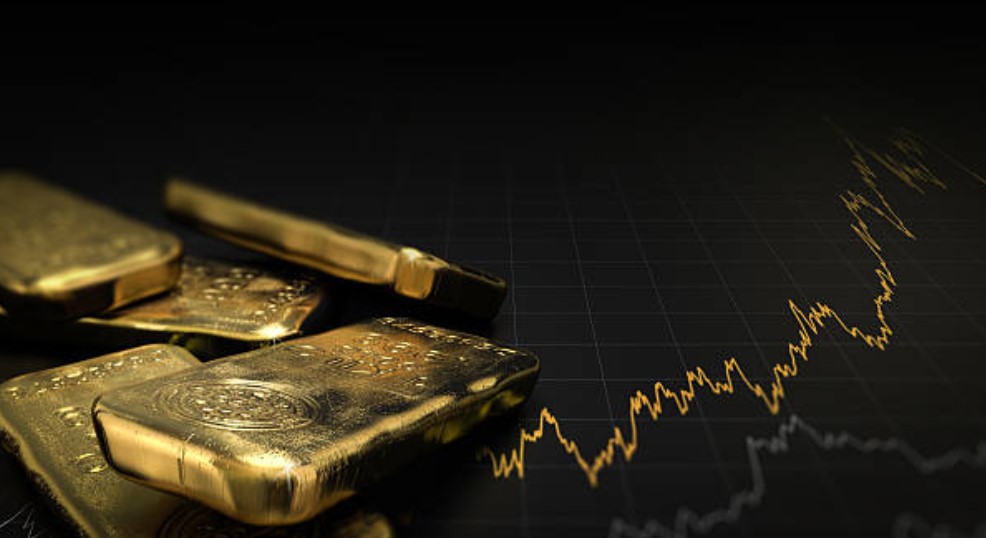Gold Bullion vs Gold ETFs – Which is the Better Investment?

By Rod Blake
There’s something very unique about gold bullion. It has a long history – 5,000 years and counting – is relatively rare. It has a stored value that is recognized throughout the world. And it can be used for monetary purposes, dentistry, as well as in fine jewelry and intricate electronics. Physical gold also has a mystique about it. If you ever get the chance – hold a piece of pure gold, or better yet, a raw gold nugget in your hand. Pure gold has a luster, a weight and a feel about it that no other element can duplicate.
It is said that all investors should own some gold. Some would say that up to 20% of their investments should be in gold but when I was a broker, holding from 5% to 10% seemed to be the norm. There are two main ways to get exposure to gold bullion. There is direct ownership by purchasing physical gold in various forms and owning gold indirectly through Exchange Traded Funds or ETFs. Both will give investors exposure to the gold market and both have their good and perhaps not so good aspects.
First, let’s look at owning physical gold. Other than heading out on the river with a gold pan, for most investors the best way to hold physical gold is by way of wafers or bars. Gold wafers are better suited for smaller investors as they can be purchased in as little as one troy ounce. Gold bars are for larger investors as they can be 400-troy ounces or larger.
Troy ounces are a holdover from Roman times and were introduced to distinguish gold, silver, platinum and gunpowder from other more common weights of that time. A troy ounce is larger than a regular ounce in that a troy ounce is 1/12th of a pound as opposed to a regular or avoirdupois ounce that is 1/16th of a pound. Therefore an ounce of gold weighs more than an ounce of say lead.
Gold wafers and bars can be purchased through various financial institutions or bullion traders. Gold bars and wafers poured from recognized refineries are stamped as such and are as close to pure gold as possible. For example, a Royal Canadian Mint 1 oz. gold wafer is stamped .9999 fine gold making it 99.99% pure gold.
There may be commission or delivery charges to add to the acquisition price, but once delivered, the value of the bars or wafers will forever correspond to the official quoted price for the amount of gold they represent. The main disadvantages of owning physical gold are the issues of delivery (one has to actually transport the physical gold), storage and safety (keeping the gold from being compromised or contaminated).
If the bar is damaged it may lose its face value or if the gold is lost or stolen there is usually no way to recover the metal. Put your gold in a safe place!
The other common way to own gold is through Exchange Traded Funds or ETFs. These funds trade on various exchanges and their price closely mirrors the current price of gold bullion. Most investors own gold in this fashion as ETFs are usually very liquid and settle trades as quickly as equities.
The investor doesn’t have to worry about storing or losing the gold somehow as this is taken care of by the fund itself. ETFs also give investors more versatility in that they can be purchased in various currencies and multiple denominations.
The downside of an ETF is that the unit holder usually has an indirect ownership of the gold itself. The investor is trusting the ETF to securely hold and store their bullion. This service comes with an ongoing management fee of some sort that slowly but continually erodes the investors’ actual gold position. Some leveraged funds will trade gold futures around their core position and the cost of this action can further erode the value of the clients underlying gold position.
Holding gold bullion directly or through ETFs both have their advantages and disadvantages. Both give investors exposure to mankind’s oldest and most stable store of wealth. For the long term investor or purest who doesn’t have storage or security issues then owning gold wafers or bars would be the way to go as, once received, the underlying value of the investment is never eroded. For a busy person or short term trader, the convenience and small underlying cost of owning a gold bullion ETF more than makes up for the expense and issues of owning physical gold bullion or the worry of its untimely disappearance.
I definitely feel that everyone should hold a core position of gold in their investment portfolio. And given the chance – they should hold a gold nugget in their hand.
